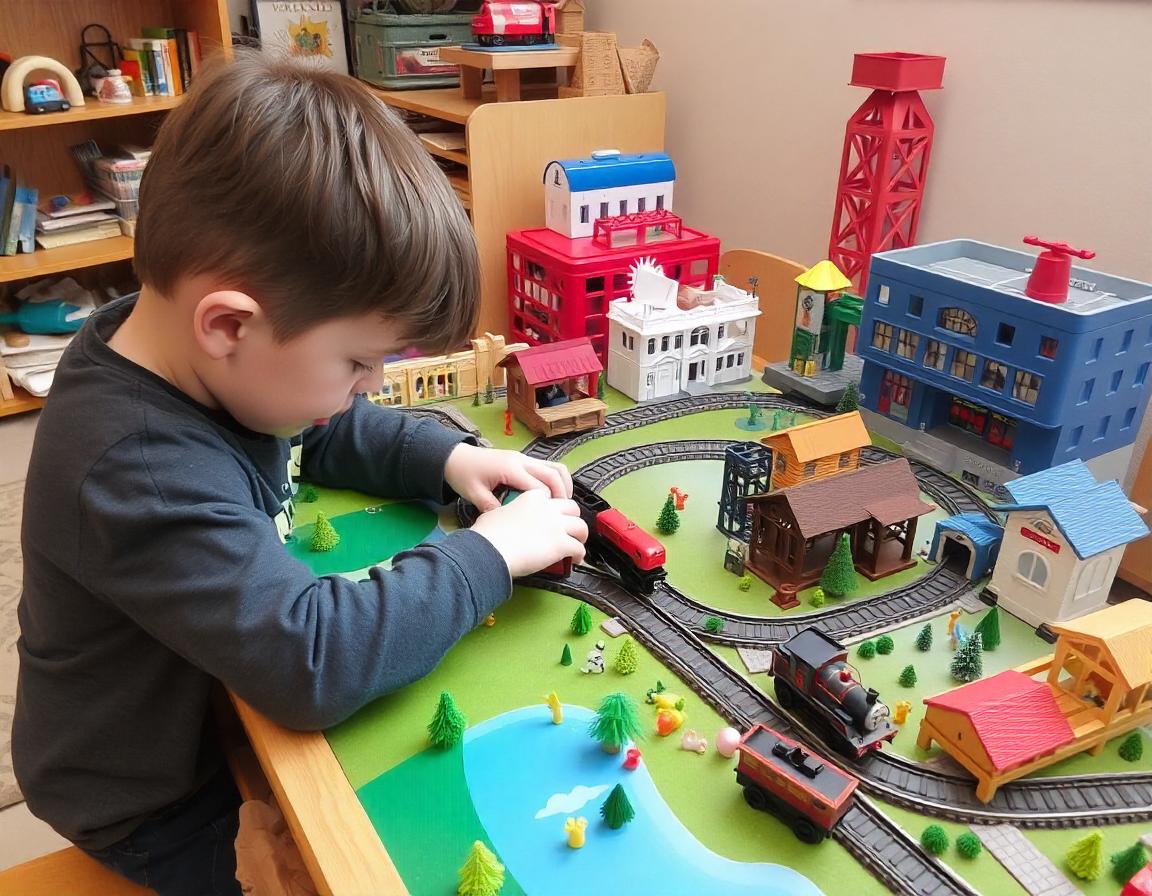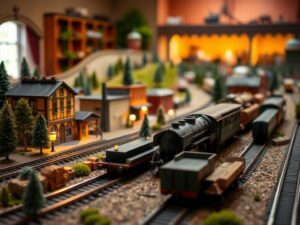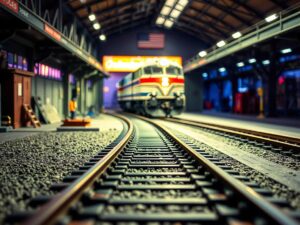
10 Layout Designs for HO Scale Beginners
10 Layout Designs for HO Scale Beginners
Whether you’re mesmerized by the rhythmic clatter of passing trains or fascinated by intricate details like tiny bridges and miniature buildings, stepping into this hobby can be both rewarding and fun. For aspiring modelers, the HO scale is a fantastic starting point – offering a balance between detail and manageability. But where do you begin when it comes to HO scale layout design ideas?
This guide explores ten brilliant layouts, catering to diverse interests and skill levels. We’ll break down their features, advantages, and how you can personalize them to make your HO-scale world truly unique. Let’s get rolling!
Why HO Scale?
HO scale (1:87) is the most popular model railroading scale globally, offering a perfect compromise between detail and practicality.
Here’s why it’s ideal for beginners:
- Affordability: HO-scale models, tracks, and accessories are generally more budget-friendly compared to larger scales like O or G.
- Manageability: HO layouts require less space than larger scales, allowing you to create captivating scenes even in smaller rooms.
- Rich Product Variety: The massive HO-scale model industry offers an abundance of locomotives, rolling stock, scenery items, and building kits. You’ll have a plethora of options to bring your vision to life! 10 HO Scale Layout Designs:
1. The Classic Oval:
This beginner-friendly design is perfect for introducing yourself to basic train operations.
- Description: A simple oval track with a passing siding or two, creating a continuous loop. Add a basic control panel and power pack to run your trains.
- Pros: Affordable, easy to set up, ideal for learning fundamentals.
- Cons: Can feel limiting after mastering basics.
2. The Dogbone Layout:
This double oval design offers a more realistic experience with independent train movements.
- Description: Two connected oval loops create a “dogbone” shape. Allows separate trains to operate on each leg.
- Pros: More interactive than the Oval, expands operations beyond continuous running.
- Cons: Requires more space and track, initial setup might be complex.
3. The Switching Yard:
For the detail-oriented enthusiasts, this layout centers around intricate switching operations.
- Description: Features a variety of tracks (industries, storage sidings, team tracks) designed to maneuver freight cars.
- Pros: Engaging gameplay, promotes creativity in handling trains and car configurations.
- Cons: More demanding setup, requires understanding of track plans and railroad terminology.
4. The Town Loop with Yard:
A combination of continuous running and a dedicated switching area, this layout caters to diverse preferences.
- Description: A scenic oval with an integrated industrial or town yard offering siding connections and operational challenges.
- Pros: Satisfies both mainline operation and detailed switching tasks, great for storytelling and visual interest.
- Cons: More complex construction, requires planning to ensure seamless transitions between running loops and yard areas.
5. The Single Main Line Through a Canyon:
A dramatic and scenic layout featuring challenging track configurations.
- Description: Tracks winding through simulated mountains with bridges, tunnels, and steep grades add realism and visual impact.
- Pros: Unique aesthetic, incorporates challenges like climbing trains and limited visibility for exciting operational experiences.
- Cons: More complex to build due to elevation changes, requires specific track types and potential lighting effects.
6. The Terminal & Industrial Area Layout: This layout simulates the bustling heart of a railway system.
- Description: A series of tracks and facilities depicting loading docks, repair yards, tank farms, and passenger platforms for a dynamic atmosphere.
- Pros: Immersive in nature, provides diverse operational challenges, opportunities to showcase industrial vehicles and specialized equipment.
- Cons: Significant space required, complex track planning essential for realistic operations.
7. The Branch Line to the Farm/Village:
Ideal for capturing a quiet and charming rural scene.
- Description: Tracks branch off from a main line leading to farmsteads, villages, or picturesque landscapes.
- Pros: Peaceful atmosphere, emphasis on storytelling and model scenery, opportunity to include farming equipment and livestock models.
- Cons: Can require more specialized track curves for smaller areas.
8. The Modular Layout System:
These layouts are built from interconnected sections allowing for endless configuration possibilities.
- Description: Standardized module sizes can be combined to create various scenes and expansion potential.
- Pros: Highly customizable, compact for limited space, ideal for showcasing specific interests (like a mountain line or an industrial center).
- Cons: Requires individual module construction skills, compatibility issues with pre-made track pieces if not designed thoughtfully.
9. The Miniature World Showcase:
For collectors and enthusiasts of miniature detail work.
- Description: Combines multiple layouts in miniature scale to depict iconic cities or specific scenes from real-world railways.
- Pros: Captivating visual displays, unique challenge for advanced model builders, opportunities to showcase favorite destinations.
- Cons: Demanding construction, extensive detailing required, specialized modeling skills often needed.
10. The Digital Layout with Control Panel & Computer Software:
Leverage modern technology for enhanced operational control and dynamic scenarios.
- Description: Utilizes digital command systems, sound decoders, automated turnouts, and control panels integrated with computer software for realistic operation and intricate simulations.
- Pros: Precise train movement control, vast possibilities for automated scenarios, programmable sequences for complex switching tasks.
- Cons: Higher initial investment, requires technical knowledge of electronics and software programming.
Insights for Choosing Your Perfect Layout:
Consider these factors to guide your choice:
- Space: Be realistic about the available area and scale your layout accordingly. Even smaller layouts can be engaging with thoughtful design!
- Interests: What fascinates you? Realistic switching, scenic mountain runs, bustling cities? Tailor your layout to reflect your passion.
- Budget: Set a realistic budget and prioritize essential items like track, locomotives, and scenery basics. Expansions can come later!
- Skill Level: Choose a design that aligns with your current skill level. Start simple and gradually tackle more complex challenges as you progress.
- Learning Resources: Embrace the community! Online forums, model railroad clubs, and books are fantastic resources for inspiration, guidance, and troubleshooting tips.Remember, there’s no “right” way to build a HO scale layout.
Have fun experimenting, unleash your creativity, and enjoy the captivating journey of building your miniature railway world!









